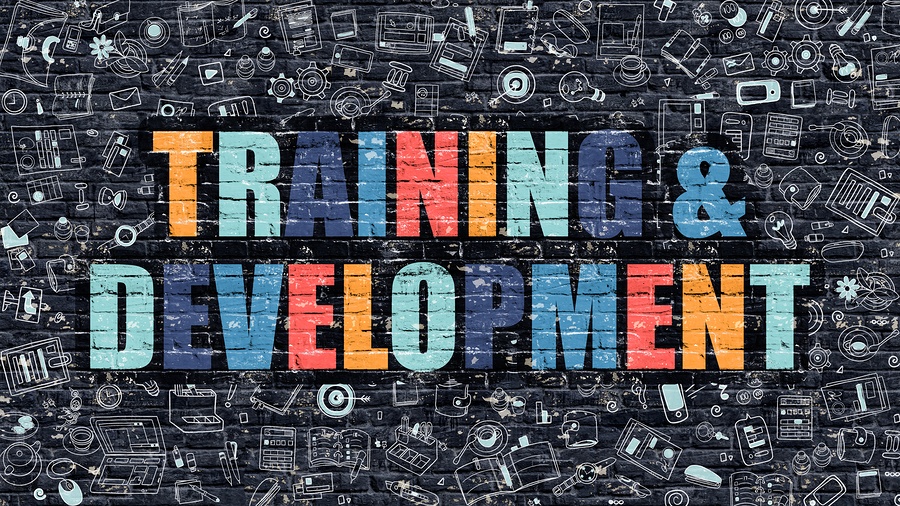Posted by Christopher Kelly

In today’s bite-sized, personalized world, there’s a lot to be said for short and sweet—and made especially for me. This concept applies to Twitter feeds, Spotify playlists, Stitch Fix personal stylists and, of course, corporate training processes.
The following, easy-to-digest list contains five, quick tips and tricks to develop and rollout an effective training program in manageable chunks.
1. Offer the flexibility of user-directed training.
Gone (well, almost) are the days of clunky, out-of-date user manuals. Today, sophisticated companies offer web-based courses, go-at-your-own-pace certification programs, online training videos and podcasts, and portals with useful tools of the trade. Instead sitting in a full-day of classroom training, field personnel can take full advantage of the flexibility and availability of today’s virtual options and, if needed, schedule their training during a slow period (e.g., end-of-day downtime, project delay, weather event).
The only caveat: It’s easy to procrastinate with user-directed training. We recommend a schedule to be followed with established date ranges for accountability.
2. Personalize your training materials to meet user-specific needs.
When members of the Agricultural Services department in Strathcona County, Alberta, changed positions and moved into new roles just as they were upgrading the software application used to manage their County Weed Inspection Program, the perfect opportunity arose for new user training. To get up-to-speed on how to use Clearion software, Sarah McDonald, GIS Project Manager, coordinated a series of WebEx training sessions with staff and the team at Clearion to gain an understanding of the technical and field capabilities of Clearion and how to successfully use the software for the Weed Inspection Program.
“As a new team forming, we reviewed a menu of potential training topics provided by Clearion and chose the specific curriculum that mattered to us. We found the ability to evaluate our options upfront to be really useful. It was the structure that we needed to achieve clarity and agreement.”
3. Make your training iterative and plan for ongoing, refresher training.
At Wilderness Environmental Services, Toby Kearney, Operations Manager deals with diverse crews ranging from technologically savvy new hires who arrive straight out of college with little-to-no field experience to seasoned crew members, some of whom may feel threatened by new technology. To avoid placing an undue burden on his frontline team, Toby began to provide hands-on, live training two times a week.
“When we first rolled out our in-truck technology and customer dashboards, our team members felt like they were drinking from a firehose. We were cramming ten thousand pounds of material into two pound box. Now we focus on asking a lot of questions to determine where our users may be struggling or what elements of the software they’re finding less intuitive and we develop our training accordingly.”
4. Pick a training partner who knows your business and your specific configuration.
A senior-level manager on the national construction and engineering team at one of our large telecom customers likens his limited solutions budget to a blessing in disguise as it has forced his team to move slowly, year-over-year, through a series of complicated processes—and associated training sessions. At the onset, this telecom rolled out Clearion Crew on tablets to all of its vendors nationwide via full-day, in-person training sessions that were tailored to educate on his specific workflows. Today, they have invested in a premium support package with Clearion to ensure resources with intimate knowledge of their ever-growing system are always available and responsive.
“As we continue to evolve and build-out our technology, Clearion provides staff continuity so we don’t have to. If we take on new engineering vendors for a large project who don’t understand the technology, Clearion steps in. They train on why the technology and data capture is important for things like assessments, feasibility studies and back-end reporting. And they train on how to use the technology to perform functions differently like how to use interactive, GIS-based, directional imagery instead of a flat CAD file for surveying, noting environmental restrictions, inputting construction units, and more.”
5. Don’t rely on a single source.
At Clearion, we’ve found that many of our customers have supplemented their formal training programs with company-sponsored book clubs or facilitated discussions on TED talks. Others have sent their team members to leadership meetings and user conferences which allow them to stay up-to-date on what’s happening with the system capabilities and share best practices with other user groups.
Lastly, every successful training program requires an internal champion who is willing to gain a complete understanding of the team’s needs and develop the effective strategy and relevant tools to support the organization in meeting its training goals. Without buy-in and reinforcement, even the best training will have a limited shelf life.
Wishing you all the best in building and maintaining your personalized training programs.
WATCH OUR CLEARION STORY VIDEO
